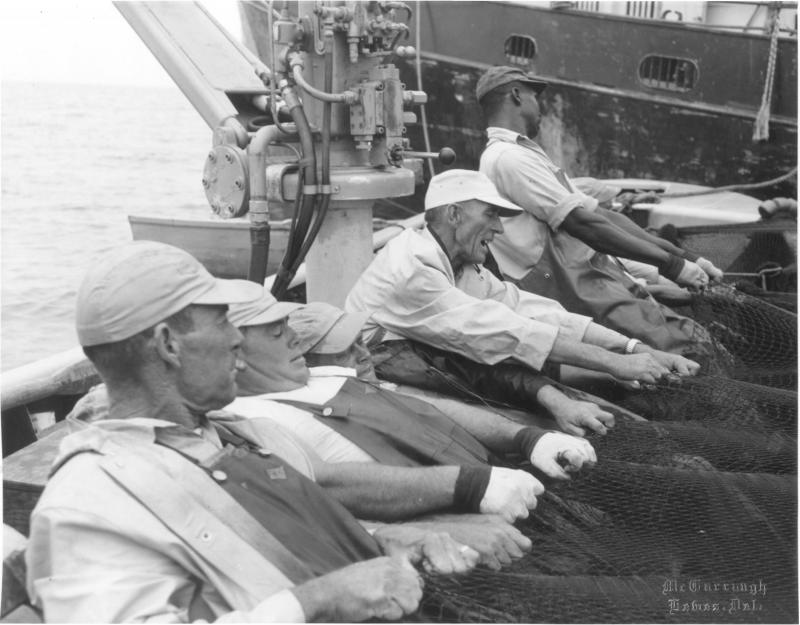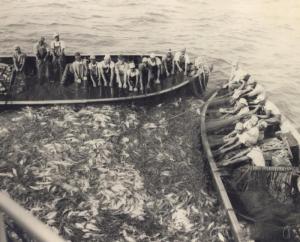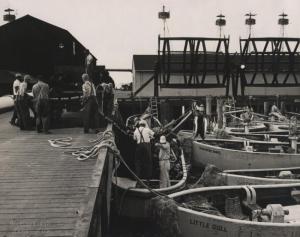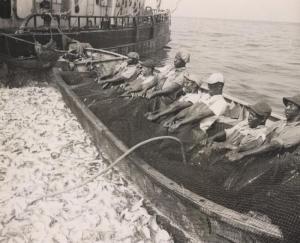For almost 60 years, the Lewes Historical Society’s role in the community has been to step in and save historic artifacts and structures threatened by years of use and deterioration.
The society continues to uphold this role of caretaker with the current restoration and preservation of the menhaden net reel, a rare artifact that represents a significant piece of Lewes history.
The town’s involvement with the menhaden industry started in 1883, when the Luce Brothers and S.S. Brown & Co. built the first menhaden processing plant in the town. However the area’s history with this small, nutrient-rich fish goes back to Native Americans, who taught early settlers how to use the menhaden as a form of fertilizer. The menhaden fishing industry was born as a substitute for whale oil in the 1880s. By 1938, the Consolidated Fisheries Company of Lewes was the largest processing plant in the United States, with menhaden providing ingredients contained in fertilizer, vitamins, and makeup.
By 1953, Lewes was the largest seafood port in the country, serving as home base for a fleet of 25 ships. More than 650 men worked in the reduction plants – three of which were located along Cape Henlopen Drive where Cape Shores is now. The industry provided employment for white and black families, both on the boats and in the factories. In 1950 the industry contributed 1,050 men to Lewes’ year-round population of 2,891. The jobs on the ships required hard work but paid quite well.
“Everyone on the ships received a salary, and additionally the watermen were paid a share of the haul – so much per pound,” said Tom Brown, whose career spanned 30 years at the National Archives in Washington, D.C. “It was actually an early form of profit sharing. Some of the boat crews would come up from the Northern Neck of Virginia or North Carolina, but most of the factory people were full-time Lewes residents living in Belltown or the Camille Section of Lewes. When the industry died in the mid-1960s, due to the decline in the numbers of menhaden, it was the end of a vibrant era for the Lewes community.”
The menhaden fish, which measures just under 15 inches, swims near the surface of the oceans and bays, in schools of 100,000 to 200,000. The purse seines used to catch these groups measured 1,200 feet long by 80 feet wide. Two small boats would position themselves around the school and drop a weight, trapping thousands of fish within the net. The net reel was an essential part of the daily operations. Due to the extraordinary length of the nets, and the fact that they were made of cotton prior to 1950, they would easily mildew after a day’s work. The 20-foot-long, open-frame wheel was designed to dry the nets while allowing for identification of needed repairs. The reel was generally turned by the African American watermen, who stood in the interior section of the wheel and sang chanteys, while walking in sync to rotate the structure. This allowed the nets to air dry in preparation for the next day.
“The net reel is an historical monument to the physical labor of untold African Americans who formed the backbone of the menhaden fish industry. This was the economic engine that powered Lewes for over 50 years in the 20th century,” said Brown.
Lewes Historical Society Executive Director James Abbott said, “Initially there were four reels like this in Lewes.”
Both Abbott and Brown agree that this could be the only net reel left in existence in the region.
“Most likely only the menhaden industry would have used such large reels, since the nets were so long,” Brown said.
The net reel was moved to the canal park in the 1970s and sat near the water’s edge with little to no recognition of its historic value to the region. Over the years its stability was compromised as the planks deteriorated and the cast-iron metal components slowly disintegrated.
“There is little record of the reel’s commercial history,” said Abbott. “From a historic perspective, the reel represents a rare, pre-civil rights America where blacks and whites worked side by side.”
The historical society is in the process of restoring and reconstructing the reel to its original form, thanks to private grants and donations. Members of the public are welcome to see the progress at the net reel’s new home on the society’s Shipcarpenter Street campus bordering Third Street. The once-forgotten reel now serves as a reminder of the region’s rich contributions from members of the the African American community in Lewes.
“Our mission as a historical society is to preserve and share history with everyone,” said Abbott.
The net reel will be a featured stop on the African American History Tour being planned by the society in conjunction with the members of the African American Heritage Commission in Lewes.
For more information or to donate toward the restoration and preservation of historic structures and artifacts, go to www.historiclewes.org.
























































